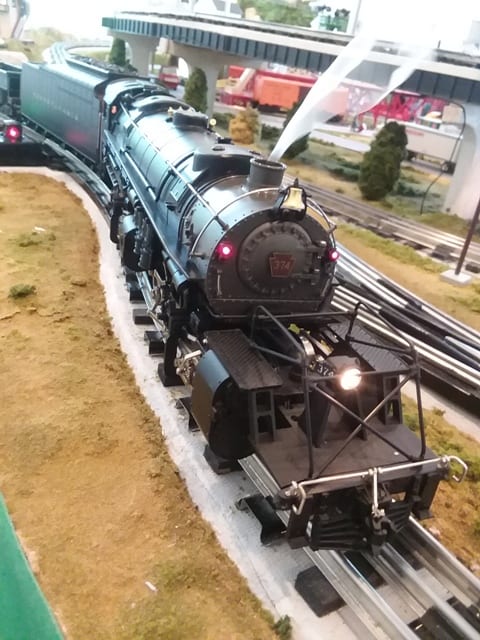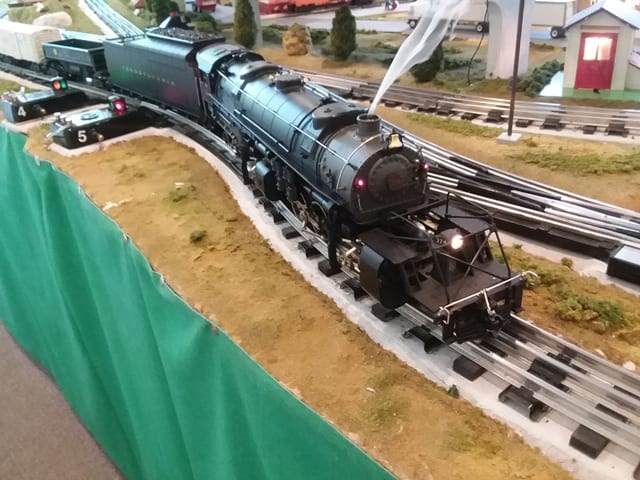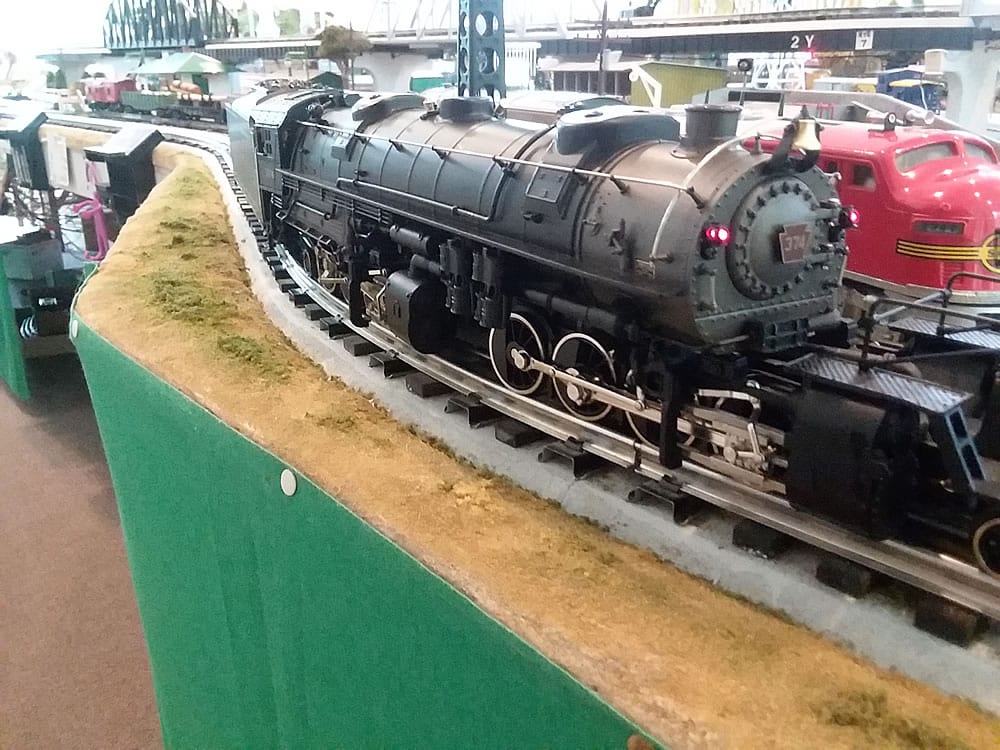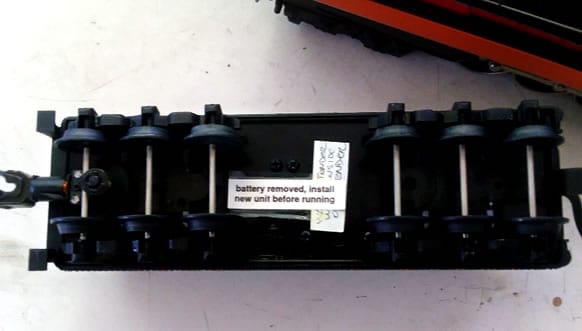On Operating Engines Using Lionel TMCC In Conventional Mode, Part 1, Operating MTH Proto-Sound 1 Engines Without a Battery or BCR

By John S. Halajko Fall 2018
TCA 84-20653
This is the first of a two-part series all about operation of three rail electric trains using the Lionel TMCC in conventional mode. The purpose of this is to all to allow the starting track voltage to begin with a near zero track voltage and to allow the engines to run below six (6) volts which is the starting point of many Lionel transformers. What follows for Lionel TMCC operation of MTH PS1 engines without a battery also applies to operation without the benefit of Lionel TMCC, but the author has not tested said operation as much as with TMCC.

One of the best kept secrets in MTH Land is the fact that many MTH Proto-Sound 1 (herein called PS1) engines run without the battery. The author has many times run his collection of early and mid-issued PS1 engines without a battery. You get directional control, steam/diesel sounds, bell and whistle/horn but may loose some features like reliable passenger station announcements/freight yard sounds, lock in one direction or Proto-Coupler. At no extra cost you never have a problem of an old battery reversing polarity and sending the engine’s QSI board set into two bell heaven. This paper will show you videos of the following PS1 engines running without a battery or BCR: MTH Premier – UP Challenger and PRR Y2, and from the MTH Rail King Fleet – PRR Torpedo and SP GS4. My former Premier N&W A needed a battery like other later issued PS1 engines. I have shown others like Frank Battagilia and John Bonfanti this really neat feature. Frank let me try it on several of his diesel fleet engines, hard at work on display duty. They all ran without the battery.

The early Proto-Sound 1 engines have a battery ON/OFF switch on the tender or diesel engine frame bottom. These are the easiest engines to test this feature with the least risk. Simply turn OFF a known good battery and try to operate the locomotive. If you are unsure of the battery condition, it is safest to follow the procedure which follows.
The later production runs have no such battery ON/OFF switch, but many still work without a battery. When I first discovered this particular feature over fifteen years ago, I asked MTH about it. They could not advise anything but the party line, put in a battery. I have since converted my PS2 fleet to BCRs or new NiMH batteries and run all my PS1 fleet sans battery. The author has not found a way to operate PS2 engines without a battery or BCR.
As proof of this desirable feature here are four of my engines hard at work on a layout without their batteries. They show demo runs using John Bonfanti’s Lionel TMCC Track Control System operating engines in the conventional mode.
The other three videos may be viewed at these links:
https://youtu.be/v-yncFQCc7k https://youtu.be/RbZlgB3UDik
It is interesting to note that my Y3, UP Challenger, SP Daylight and PRR Torpedo PS1 card sets started working below three volts. My Rail King PRR Torpedo’s passenger station announcements and coupler worked flawlessly without a battery. My SP Daylight passenger station announcements worked without a battery, but the coupler arming reinitiated the passenger station announcements, then the SP Daylight’s headlight would not turn on until I reinstalled a nine-volt battery and recycled operation. All is not well with some PS1 features if you choose to run without the benefit of a battery or BCR.

In summary, you may be able to operate some of your PS1 engines without a battery. The easiest ones to identify are the units with a battery ON/OFF switch. Some features like reliable passenger station announcements and/or Proto-Coupler operation may require a battery or BCR. If you are just going to run the engines, blow the whistle and ring the bell, you may enjoy running without a battery or BCR. Later edition PS1 Engines require a battery or BCR.
Before attempting to try this with a member of your fleet, I suggest that you remove the old battery. Use a grounding strap to prevent accidental static discharges. If you never did this before, consult YouTube videos. Install a new 9 volt battery or BCR, and charge the BCR as per manufacturer’s procedure. Confirm operating of the PS1 engine using MTH instructions. This familiarizes you with the operating the TMCC hand held. Next, remove the battery or BCR and tape the connection terminals to prevent accidently sorting the circuit when reinstalling the tender or diesel shell. Take care not to damage PS1 board set and remember to use proper grounding protocol when doing this operation. Test to see if you have a member of the SANS BATTERY FLEET. Suggest you mark the engine. Below I show an example of one of my earlier tags when I mothballed the engine for display assignment.

Finally, why am I operating using TMCC? Surprisingly the locomotive sound cards start operation at low voltage levels, well below six (6) volts, and that voltage level is just fine with TMCC. Operation below 9 volts is great for low speed operation of short consists. Proper use of the TMCC red dial with its direction button allows a smooth transition to train movement. Tune in for Part 2 to learn more.
Disclaimer: The author and TCA take no responsibility for any damage that may occur when the owner tries this feature. The owner is responsible for all his actions. If you wish to bring your engine over for a test run, you can contact me at [email protected].





